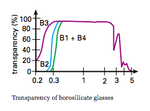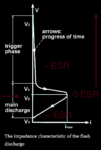grizedale
Advanced Member level 3

Hello,
We are using a xenon flash tube and trigger transformer.
Our new xenon tube does not always trigger and we notice that the trigger circuit is slightly different.
We are suspicious that the trigger circuit is incorrect, and wish to find the datasheet for the xenon flash tube and the trigger transformer, but we can find neither of these things.
We are told that the xenon tube is AGA0017 DDS4 by Perkin Elmer
We are told that the Trigger transformer is ZS1052-SUL(H)-V02, again by Perkin Elmer.
However, i went to the Perkin Elmer website and they do not even appear to sell xenon tubes.......and googling the part numbers reveals nothing.
I am wondering of the xenon tubes division of Perkin Elmer has been sold off to somebody else...but who?
..i wonder this because i did manage to find this document on flash tubes by Perkin Elmer...
**broken link removed**
......we are using the trigger circuit like on page 4, part (1) "Capacitive external triggering".
Our thyristor is BT168G:-
**broken link removed**
The capacitor is 47nF, 250V, X7R, and the resistor is 22MegOhms
Our Bulk voltage across the tube, when it is triggered is 200V, this is provided by a 22uF, 250V electrolytic which is re-charged by a buckboost converter when the flash has discharged it.
Our trigger pulse, from the microcontroller to the thyristor is 3V high and 10us long...there is 1K in series with the thyristor gate drive, so the maximum the gate current could be would be 3mA.
We only flash once every 810ms. (I put a 0R1 sense resistor in series with the tube, and noticed that the tube current is 21 A peak, and the current has pretty much all died away after 200us.)
-The flash though, appears to the naked eye , to last longer then 200us.
(I am hoping that there is no ultra-violet in the light from the xenon tube?)
I did manage to find this on trigger transformers of perkin elmer but ours is surface mount so cant be any of these.....
**broken link removed**
We are using a xenon flash tube and trigger transformer.
Our new xenon tube does not always trigger and we notice that the trigger circuit is slightly different.
We are suspicious that the trigger circuit is incorrect, and wish to find the datasheet for the xenon flash tube and the trigger transformer, but we can find neither of these things.
We are told that the xenon tube is AGA0017 DDS4 by Perkin Elmer
We are told that the Trigger transformer is ZS1052-SUL(H)-V02, again by Perkin Elmer.
However, i went to the Perkin Elmer website and they do not even appear to sell xenon tubes.......and googling the part numbers reveals nothing.
I am wondering of the xenon tubes division of Perkin Elmer has been sold off to somebody else...but who?
..i wonder this because i did manage to find this document on flash tubes by Perkin Elmer...
**broken link removed**
......we are using the trigger circuit like on page 4, part (1) "Capacitive external triggering".
Our thyristor is BT168G:-
**broken link removed**
The capacitor is 47nF, 250V, X7R, and the resistor is 22MegOhms
Our Bulk voltage across the tube, when it is triggered is 200V, this is provided by a 22uF, 250V electrolytic which is re-charged by a buckboost converter when the flash has discharged it.
Our trigger pulse, from the microcontroller to the thyristor is 3V high and 10us long...there is 1K in series with the thyristor gate drive, so the maximum the gate current could be would be 3mA.
We only flash once every 810ms. (I put a 0R1 sense resistor in series with the tube, and noticed that the tube current is 21 A peak, and the current has pretty much all died away after 200us.)
-The flash though, appears to the naked eye , to last longer then 200us.
(I am hoping that there is no ultra-violet in the light from the xenon tube?)
I did manage to find this on trigger transformers of perkin elmer but ours is surface mount so cant be any of these.....
**broken link removed**
Last edited:



